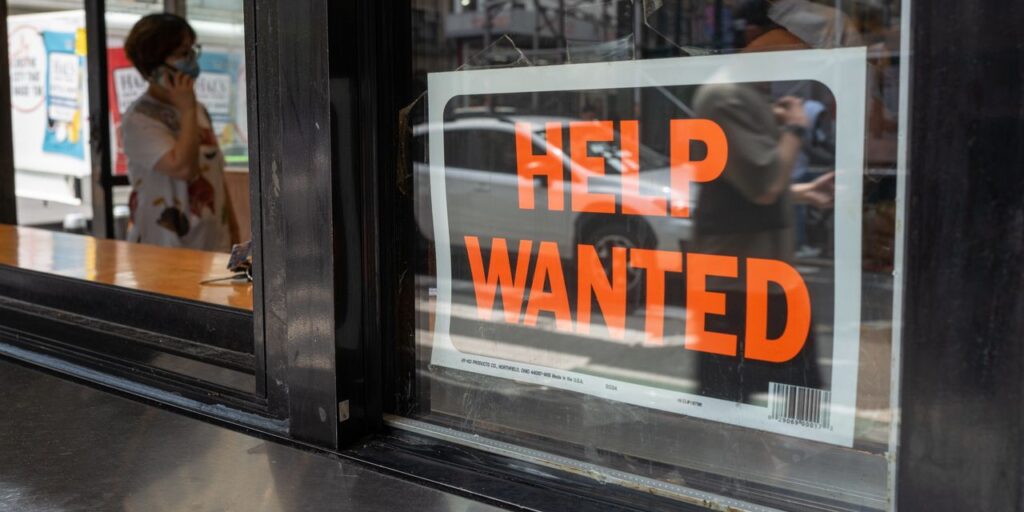Yet another shockingly large increase in hiring in May suggests the U.S. labor market is still running hot, but some economists see a spike in the unemployment rate as a warning sign.
The economy added 339,000 jobs in May to mark the biggest increase in four months. Employment gains in April and March were also much stronger than previously reported.
All told, the U.S. added an average of 283,000 a month from March to May. That’s almost triple the rate of employment growth the Federal Reserve would like to see as it battles to bring down high U.S. inflation.
The central bank views the tight labor market as an impediment to getting inflation under control. When the demand for labor outstrips the supply, businesses have to pay higher wages. Rising pay then makes it harder to reduce inflation.
The surge in hiring last month, however, was also accompanied by an increase in the unemployment rate to 3.7% from 3.4%. It was the biggest one-month increase since the onset of the pandemic in March 2020
The rate rose mostly because of a 440,000 increase in the number of people who said they were unemployed. That was also the biggest increase since the coronavirus pandemic shut down the U.S. economy three years ago.
Granted, the jobless rate is still extremely low, at levels last seen in the 1960s, but some economists said the increase in May is a sign of things to come.
“The long-expected softening of the labor market has begun,” said chief economist Bill Adams of Comerica.
Economists also pointed to slower wage growth as a sign of softening.
Hourly pay rose a mild 0.3% in May, lowering the increase over the past year to 4.3% from 4.4%. Wage growth peaked at 5.9% last year.
Others were unconvinced.
“Not only the payroll figures but pretty much every other measure of labor demand — job openings, online job listings, initial claims — indicate that the labor market remains hot,” said Stephen Stanley, chief economist at Santander U.S. Capital Markets.
It’s not just employment, either. Other reports on consumers and businesses also show the economy still expanding at a pace the Fed is unlikely to be comfortable with.
Still, economists on both sides of the debate believe the Fed will skip an interest-rate hike in June to give it more time to figure out what is going on in the economy.
“The Fed has indicated a willingness to move to the sidelines sooner than later and may still do so,” said chief economist Lindsey Piegza of Stifel Economics. “However, any decision to pause at this point would be made not because of the data, but in spite of the data.”
Read the full article here











